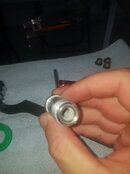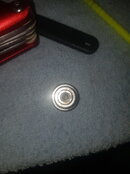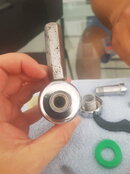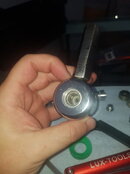Most manufacturers now recommend about two years between overhauls -- a bit more frequently, if heavily used.
That said, I have a number of regulators that I serviced a few years back, that I haven't bothered to re-build, since they run well; their IP is solid; and they don't concern me, in the least.
The parts-for-life programs are a real fool's errand. I have yet to see a brand who hasn't or won't eventually renege upon them. You're taking it in the shorts, one way or another. Either you face inflated labor costs for an approved overhaul interim and the most expensive "free" kit of rubber bands and a sintered filter that you've ever seen; or, in the case of the old ScubaPro agreements (which they have apparently reneged upon), complex conditions and interval rules, that would make the IRS blush.
Friends overseas have really bristled at that, given that some claimed to have lost warranty coverage, through no real fault of their own, during the ongoing covidiocy and after serial temporary or or permanent store closures.
My advice, unless you are headed down the DIY route, is to establish a friendly relationship with your local dive shop, one which services your brand; and generally, many will cut you some slack, if you give them regular business. Just don't flaunt some latest new widget that you've just bought on Amazon.
Early on, before I worked on my own, a local shop charged me their price for rebuild kits, since I always had a number of our regulators serviced through them, for some years. Not a huge discount, but a nice gesture, nonetheless.
A friend who once ran a successful local dive shop (before retiring to Baja Sur), told me, years ago, that the failure rate was just as high and the all-too slim profit margin mirrored that of most independent restaurants -- that is to say, not too damn high . . .









